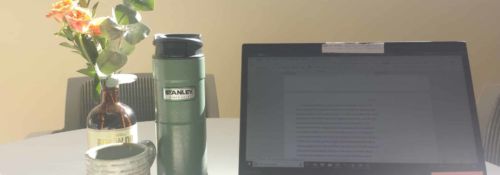
Creating Beautiful Study Spaces
Written by Marcella Brylski
It was a normal, if dreary and drizzly, Sunday afternoon in my sophomore year, and I was having an existential crisis. There was a lot to do—papers to write and math projects to finish, on top of the normal set of reading and other daily assignments—but this was only part of my problem. It might sound pathetic, but the real problem was that I had no place to study. I just could not stand another afternoon spent in the gray afternoon light of the second level of the library, affectionately labeled “Purgatory.” A classroom sounded lonely; AJ’s sounded too loud; my basement dorm room sounded dark and depressing. I felt at the same time restless, overworked, and silly for having such a petty problem. I couldn’t, though, for all of that, shake the conviction that simply none of my usual study spaces would work.
Sometimes it’s enough to switch up your study spaces. In the Fall and the Spring, I’ll mix things up by spending as much time as possible reading outside, either on campus or at Slayton Arboretum. In the winter, sometimes cozy, indoor spaces like the Heritage Room fit the bill: a quiet spot next to the grand fireplace, surrounded by dark wood and a lavish collection of old books warms the bogged-down student’s chilly and overworked soul. Or you can shake restlessness by eschewing the library for more creative spaces like the Fine Arts building, which has several nooks and crannies for the discovering, or a local coffee shop. But when the long end of winter gets you down, and the rain is falling, and you feel you’ve used up absolutely all of your options—and you really need to get to work on those end-of-semester assignments—you have to get a bit more creative.
I asked a number of students what they do to keep their study spaces from wearing out and feeling dull, and the results, while various, pointed to one thing: make your study space, in whatever small ways you can, beautiful. This takes many different forms depending on the student and the season. For example, one of my friends, a true lover of the Christmas season, makes the end of first semester bearable by bringing a miniature Christmas tree, complete with colored lights, to whatever space she camps out in. A number of students will bring something small to put on their desks in the library, giving a personal touch to their study space. Some bring in fun objects with personal significance—for one student, a stuffed animal that he calls his “goat of focus.” Others bring pictures of family to remind themselves of the life and love that exist outside of the stress of academic life. Others again will place small religious icons or copied out Bible verses next to their computer screens to remind themselves of the reason for studying and for studying well.
Even small elements of beauty can help us to gain an important dose of perspective. A beautiful lamp or a cut flower on the table next to us when we read a great work of literature can help us slow down and savor the work for what it really is. A great Shakespeare play is never just another thing to read, or another entry on a to-do list, as much as we might think it when the stress of a busy semester catches up with us. It is a work of art that has much to offer both in the way of beauty and in the way of intellectual and personal significance.
While it may not always be possible to take our leisurely time in appreciating the beauty of what we study, it is at least important to take the time once in a while to surround ourselves with beauty and remember the beauty of the studies at which we spend so much time. And I have a hunch that if we only remind ourselves of this reality and take the time to really immerse ourselves in what we do as students, we will be happier to study and less stressed—and maybe even more successful in our studies for our love of it.
 Marcella Brylski, ’20, grew up in the great state of Minnesota, where she learned to love sunny fall days and distance running along the Mississippi River. She studies English and Greek at Hillsdale and takes great joy in unexpected conversations with friends, discovering contemporary poets, and unearthing treasures at the local thrift store.
Marcella Brylski, ’20, grew up in the great state of Minnesota, where she learned to love sunny fall days and distance running along the Mississippi River. She studies English and Greek at Hillsdale and takes great joy in unexpected conversations with friends, discovering contemporary poets, and unearthing treasures at the local thrift store.
Published in April 2019